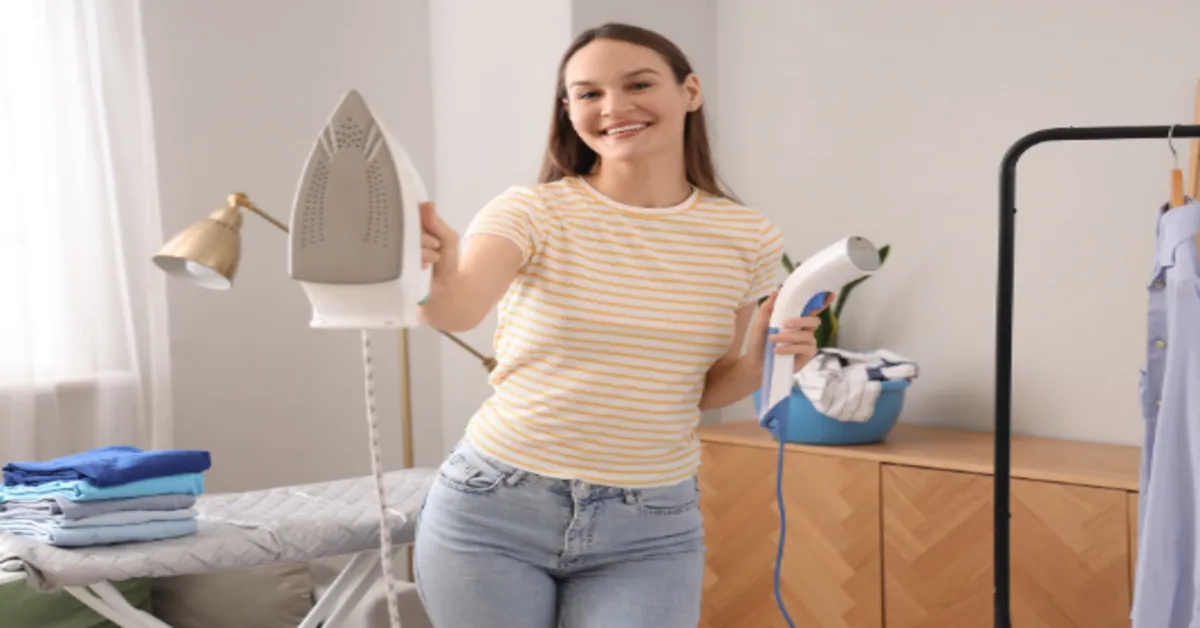Most of us have to iron our clothes, but it’s not always enjoyable! You may be wondering if a garment steamer or a conventional iron is the better option for keeping your garments wrinkle free. Let’s examine each tool’s advantages and disadvantages to see which one would be the most suitable for you.
Ease of Use
Garment Steamers: Using a garment steamer is quite simple. Simply hang your items up and let the steam do its thing. You don’t even need an ironing board; you may hang your garments instead. This makes it easy and quick, especially if you’re pressed for time. Additionally, steamers are kinder on clothing, making them ideal for delicate materials like silk.
Traditional Irons: Irons need a flat surface, like an ironing board. Because you must press the iron on your clothing to remove wrinkles, using an iron requires a little more work. Irons, on the other hand, provide you greater control, allowing you to achieve really clean, crisp lines, particularly on shirts and pants.
Which Fabrics Work Best?
Garment Steamers: Light textiles that don’t require a lot of pressure are ideal for steamers. They are perfect for delicate fabrics that could be harmed by iron heat, such as satin, silk, or lace. For fast touch-ups on wool or synthetic materials that don’t require a lot of pressing, steamers are also useful.
Traditional Irons: If you have clothes made from heavy fabrics like cotton, denim, or linen, an iron is usually better. An iron’s direct heat and pressure may remove stubborn wrinkles and provide a smooth finish, making it ideal for formal and professional settings.
Convenience and Speed
Garment Steamers: If you’re in a rush, garment steamers are ideal because they heat up quickly typically within a minute. They’re also quite convenient because you don’t have to set up an ironing board. A steamer can even be used on furniture fabric, bed linens, and drapes.
Traditional Irons: Irons may take a few minutes to heat up and require an ironing board, so they can take more time to set up. However, because an iron can easily press huge creases, it might be a speedier option if you’re ironing a lot of items at once.
Portability
Garment Steamers: A lot of garment steamers are compact and lightweight, which makes them perfect for traveling. Certain types are lightweight and portable, making them suitable for packing in a suitcase. A steamer can help preserve your clothes wrinkle-free and fresh if you travel frequently.
Conventional Irons: Although there are travel-sized irons, they are frequently larger than steamers. Additionally, you would still want a hard surface to press your garments on or a little ironing board. Because of this, irons are a little less useful for travel than steamers.
Cost and Maintenance
Garment Steamers: Although there are a variety of steamer types and costs, handheld steamers are frequently reasonably priced. Maintenance is simple; all you typically need to do is sometimes remove any mineral deposits.
Traditional Irons: While entry-level irons are reasonably priced, more expensive ones can be quite expensive. Additionally, irons require routine cleaning, particularly the soleplate, which can accumulate minerals or stains if hard water is used.
Which is Best for You?
In the end, both garment steamers and traditional irons can help you look your best. A classic iron is the best option if you want thick materials to look polished and professional. However, a garment steamer can be ideal for you if you work with delicate textiles and value portability and convenience. Some even use both, using an iron for thorough pressing when necessary and a steamer for fast touch-ups.
Select the one that most suits your way of life, and you’ll always look put together and prepared for the day!



